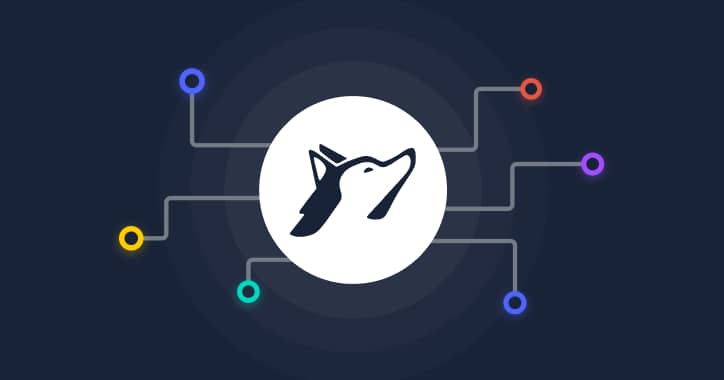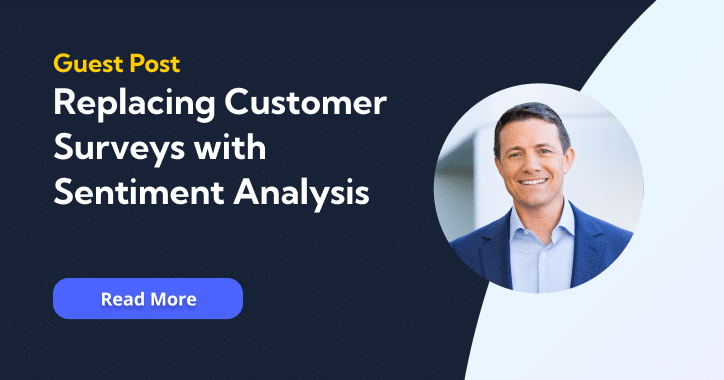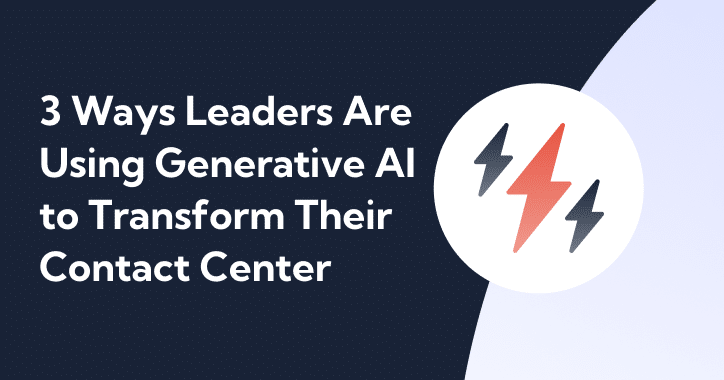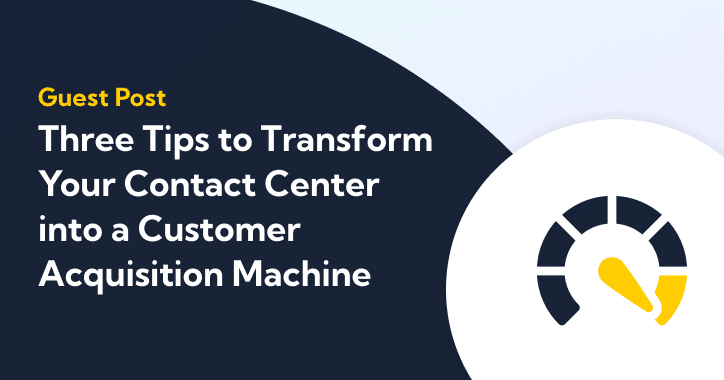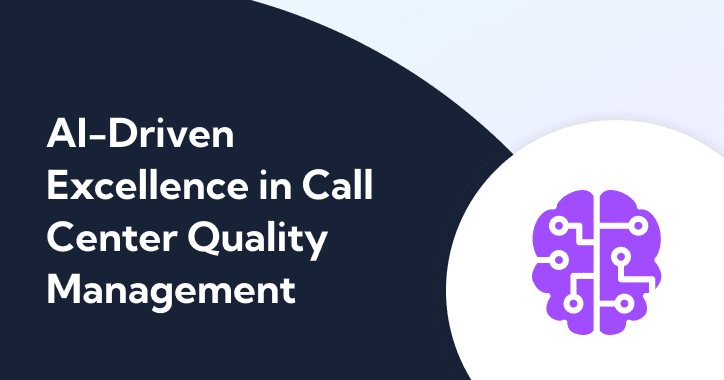
Steven Nichols
NLP Engineer
Over the next several weeks, Balto is giving readers a peek behind the curtain of the industry-leading AI technology that powers our real-time guidance platform.
Balto’s Speech and Language Processing (SLP) team is responsible for building the artificial intelligence models that power the “brain” behind our call center automation software. From gauging real-time caller sentiment to masking potentially sensitive data, Balto harnesses AI to quickly and reliably improve the experience for agents and the customers they serve.
Building such systems is no small feat. Our engineers face the unique challenge of deploying low-latency machine learning models that can handle thousands of requests per second, while working with a massively diverse group of clients, ranging from bill collectors to dog training companies.
Key to solving this challenge is the ability to collect high-quality AI training data and quickly iterate over existing AI models. To do this, our natural language processing (NLP) engineers rely on the Balto AI Hub, an internally built data labeling and model management system that draws from our massive database of hundreds of millions of real-life call center interactions.
Balto AI Hub: The Lynchpin to AI Improvement at Balto
The Balto AI Hub supports complex data labeling scenarios, such as AI-assisted multi-label text classification, token level classification, text pair labeling, and call center scripting software audio transcription correction. Labeling transcripts is key to how AI learns and improves. It’s how it can decipher words like “won” from “one”.
Balto has a team of data labelers that serve as the human in the loop, helping us build high quality supervised data. The hub uses embedded machine learning models behind the scenes to reduce cognitive load on the human labeler and significantly speed up the onboarding process for new contributors.
As seen in Figure 1, the labeling interface for Balto’s AI Library topic classification engine draws on previous data to actively suggest alternate or additional labels from its ontology of over 100 categories.
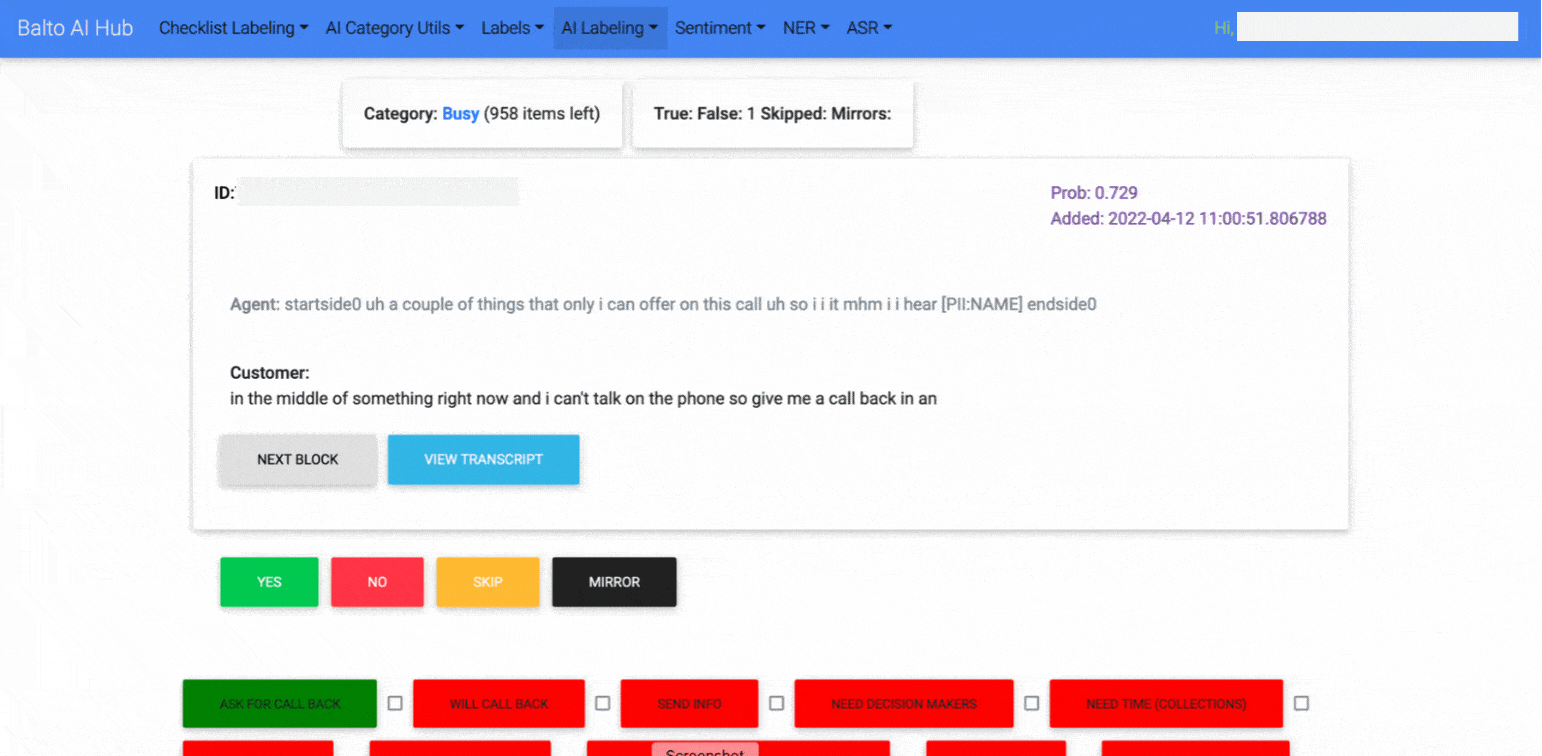
Protecting Personally Identifiable Information (PII)
The SLP team was able to leverage the AI hub to build a deep-learning model for automatic transcript redaction without having to expose potentially sensitive information to labelers (this is a big no-no for compliance and security). We did this by running the transcripts through an initial layer of “dumb” redaction, removing all potential sensitive information using tried-and-true heuristics.
Then, human labelers were asked to categorize sensitive information and unmask tokens that should not have been redacted (Figure 2). To make the process quicker and easier for the human in the loop, the AI Hub generates replacement suggestions by querying a masked-language model (MLM) to fill in the blanks.
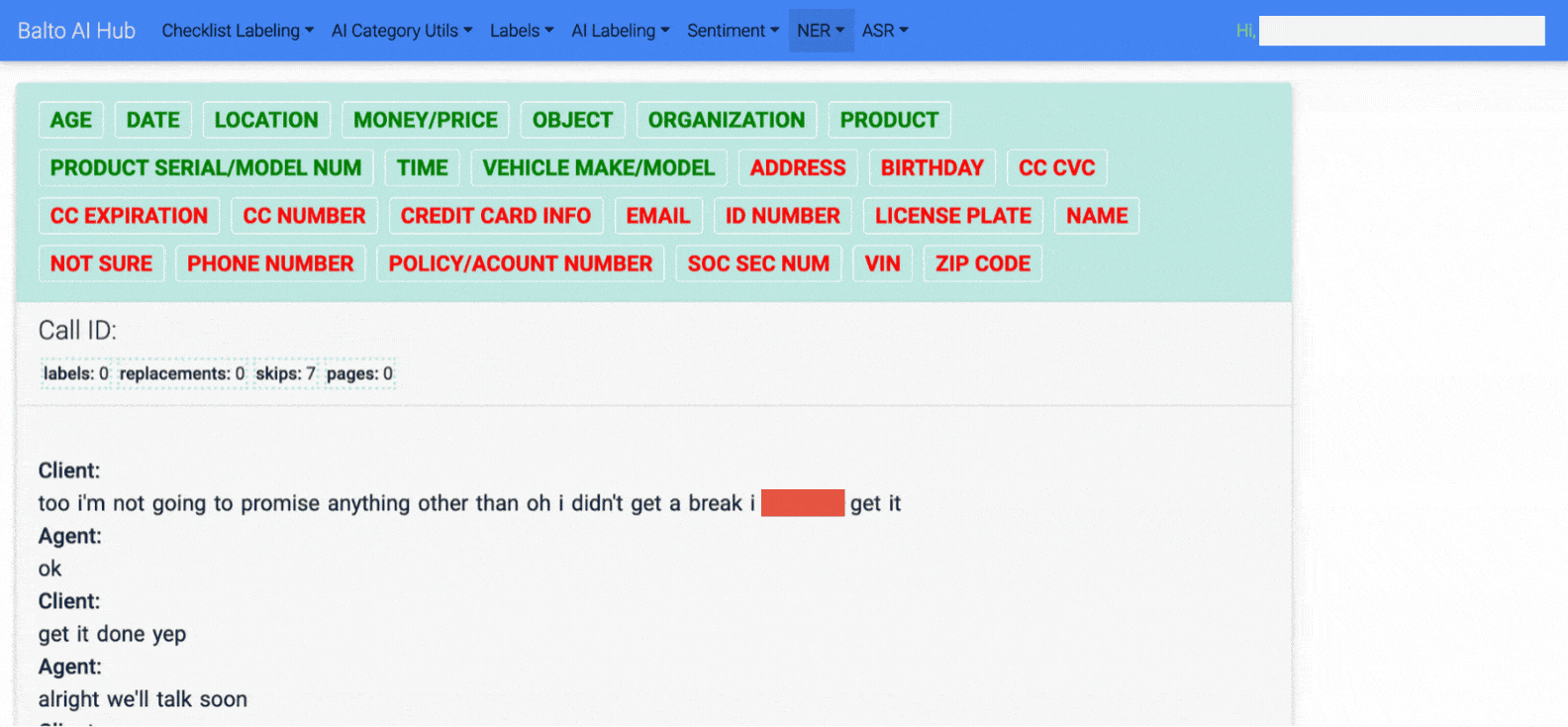
Making People Better with Technology
Balto’s mission is to improve contact center agent performance on calls by guiding them to the best possible outcomes using the power of AI. But that philosophy isn’t just the driver for our industry-leading real-time guidance products. We understand first-hand how leveraging AI to improve people’s performance leads to great outcomes, and it is core to how we operate internally across the entire company.
It’s the reason we developed the Balto AI Hub — to make our jobs easier so that we can better serve our customers with the most sophisticated NLP on the market today.
If you would like to learn more about how we use AI technology to turn contact centers into profit centers, schedule a demo now.

